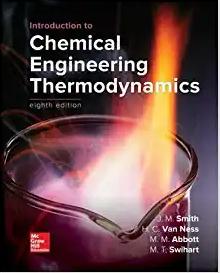Answered step by step
Verified Expert Solution
Question
1 Approved Answer
You should use the template to present your answers to the following questions: 1 . With your individual data, calculate y 1 D , D
You should use the template to present your answers to the following questions:
With your individual data, calculate yD D W xW Tt Tb Pp Tp and CV
Recalculate the output values from Question when your QB value changes by i
ii iii
Recalculate the output values from Question when your xF value changes by i
ii
Recalculate the output values from Question when your q value changes by i
ii
Recalculate the output values from Question when your reflux ratio, R is changed to
i ii iii its minimum at your QB value
Recalculate the output values from Question when the column pressure, PC changes
by i bar, ii bar
Calculate the minimum column pressure, PC needed to allow the feed flowrate, F to
increase by and the corresponding change in column conditions.
Calculate the pressure and temperature setpoints Pp and Tt to give yD and xW
and the corresponding reflux ratio.
Hints and tips:
Calculating u and You can calculate these parameters based on an average
temperature within the column, taken as the average of the pure component boiling points
at the column pressure.
Calculating CV The density of water can be assumed to be kgm at the reference
conditions for the flow coefficient equation.
Calculating Tt and Tb These temperatures can be estimated based on the bubble point of
the liquid at the appropriate stage.
Calculating Tp and Pp Assume that the propane refrigerant is at the same temperature as
the twophase mixture in the condenser. The Antoine equation constants for propane are:
A B C p in mmHg T in oC
You may get two solutions to Question Either can be presented as your answer.

Step by Step Solution
There are 3 Steps involved in it
Step: 1

Get Instant Access to Expert-Tailored Solutions
See step-by-step solutions with expert insights and AI powered tools for academic success
Step: 2

Step: 3

Ace Your Homework with AI
Get the answers you need in no time with our AI-driven, step-by-step assistance
Get Started


